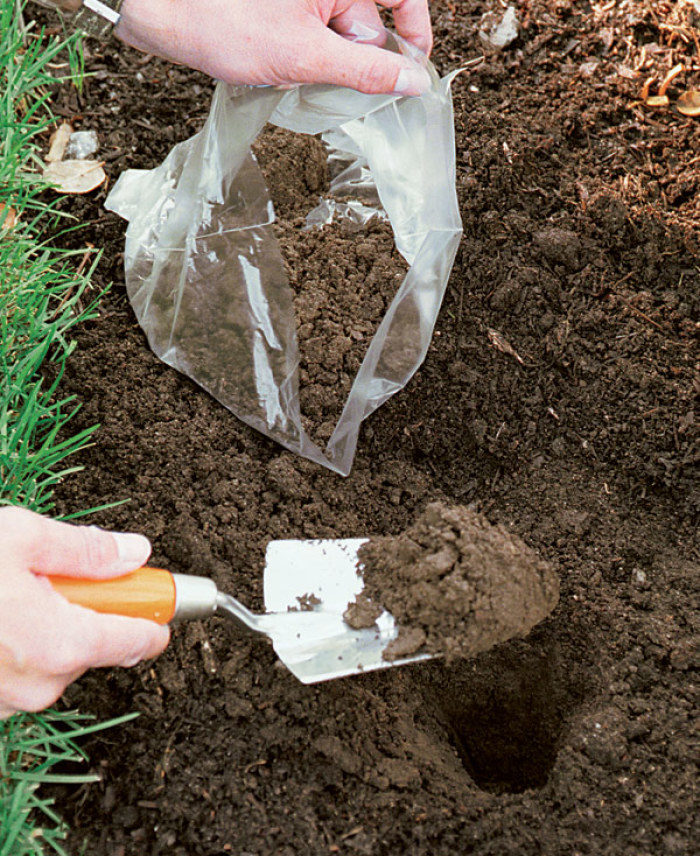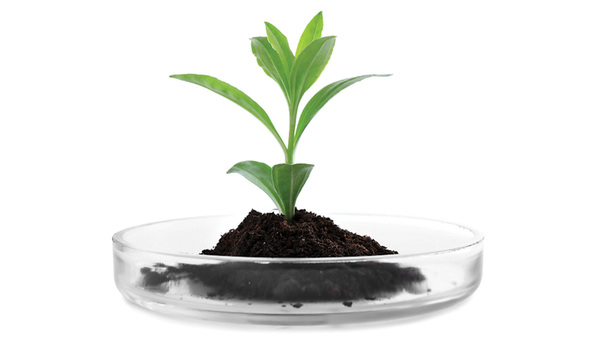
by Israel Zelitch
April 1999
from issue #20
Some requirements for a successful vegetable garden are highly visible, such as sunlight. But you can’t see pH. It’s an abstraction buried in the soil.
Understanding your soil’s pH is invaluable. Proper pH makes it easier for roots to absorb essential nutrients. And if this often-neglected aspect of soil fertility is ignored, the results can be seen in slowed growth of plants and, in extreme cases, discolored leaves. It’s worth it to get the pH right.
Soil pH basics
Think of pH as simply a way of measuring a condition in a common way, sort of like a ruler. Acidity and alkalinity are measured in pH units, which are expressed in a logarithmic scale from 0 to 14. Technically, acidity is associated with an increase in hydrogen ions, and alkalinity with an increase in hydroxyl ions. The differences affect how molecules interact in the soil.
A pH of 7.0, like pure water, is neutral because the concentrations of hydrogen ions and hydroxyl ions are the same. As the pH number goes lower than 7, the hydrogen ions increase and the soil becomes more acidic; as the pH number goes higher than 7, the concentration of hydroxyl ions increases and the soil becomes more alkaline.
Most vegetables grow best in a slightly acidic soil, with a pH between 6.0 and 7.0. Experiments show tomato plants grown at pH 4.8 are undersized, but normal at pH 6.0. Corn yields at pH 4.7 are 66 percent lower than they are at pH 6.8.
Going from one pH number to the next makes a big difference because the numbers change by factors of 10. A pH of 6 is 10 times more acidic than a pH of 7 and a pH of 5 is 100 times more acidic than a pH of 7.
Acid soils, common in the East where rain leaches out calcium, and the underlying rock is largely magnesium, typically range from pH 4 to 6, while alkaline soils in dry Southwestern states arise from calcium-rich rock and range from pH 7 to 9.
pH affects nutrient uptake
You can lay out a nutrient feast for vegetables, but roots may not be able to absorb it well if the soil pH is not appropriate. Phosphorus provides a good example.
In importance to plants, phosphorus is a close second to nitrogen. The plant needs phosphorus for DNA, membrane development, and energy production. Phosphorus also participates in photosynthesis and sugar formation.
But most of the phosphorus in soil particles is tied up in insoluble forms unavailable to roots. It must be in solution in the form of orthophosphate for the plant to absorb it.
At very low pH levels, the phosphorus is tightly bound to iron and aluminum in the soil. At high pH levels the phosphorus is locked in insoluble forms of calcium and magnesium.
But there is a pH window between 6 and 7 where the mineral grip on phosphorus loosens and more orthophosphate dissolves.
Also, the pH of orthophosphate in solution determines its electrical charge, which affects uptake. Around pH 6.0, orthophosphate has one negative charge, the form favored for root absorption. But above pH 7.5, most of the orthophosphate has two negative charges and is absorbed more slowly.
Because of the pH effect, adding phosphorus to a garden can be tricky. Just because you put on three pounds doesn’t mean three pounds will be available. Adding an amendment such as superphosphate temporarily makes more orthophosphate available. But most of the added phosphorus gradually turns to insoluble forms.
The role of pH is less dramatic with other nutrients. Nitrogen, usually taken up by roots as nitrate, is very soluble in the soil solution. Its uptake by roots is not influenced by soil pH. Likewise with potassium, which clings tightly to soil particles in layers of crystalline sandwiches and does not leach rapidly like nitrate.
Plants require minute amounts of other minerals, including iron and zinc. Although the ideal pH for these elements varies, a pH of 6.5 is usually adequate to make sufficient amounts available. In alkaline soils, poor growth and yellow leaves are frequently encountered because plants cannot absorb enough iron, since it becomes insoluble.
Measuring pH and amending the soil
The first step toward proper pH is measuring the pH you have now. Do-it-yourself kits provide approximate pH values, and they’re easy to use. More exact results come from agricultural experiment stations or private labs.
If it turns out the soil is too alkaline, the acid level can be increased by mixing in materials such as peat moss or sulfur. Clay soils demand more of these amendments. For example, to change the pH from 8.0 to 6.5 requires about 38 pounds of sulfur per 1,000 square feet in loam and 50 pounds in clay soil.
The low pH of acid soils can be counteracted by mixing in crushed limestone or wood ash. The amount needed depends on the pH change and the soil texture. Raising the pH from 5.0 to 6.5 in a sandy loam requires 85 pounds of limestone per 1,000 square feet. A clay loam needs 165 pounds.
Fine Gardening Recommended Products

Razor-Back Potato/Refuse Hook
Fine Gardening receives a commission for items purchased through links on this site, including Amazon Associates and other affiliate advertising programs.

Fort Vee - Organic Potting Soil Mix
Fine Gardening receives a commission for items purchased through links on this site, including Amazon Associates and other affiliate advertising programs.


















Comments
Log in or create an account to post a comment.
Sign up Log in